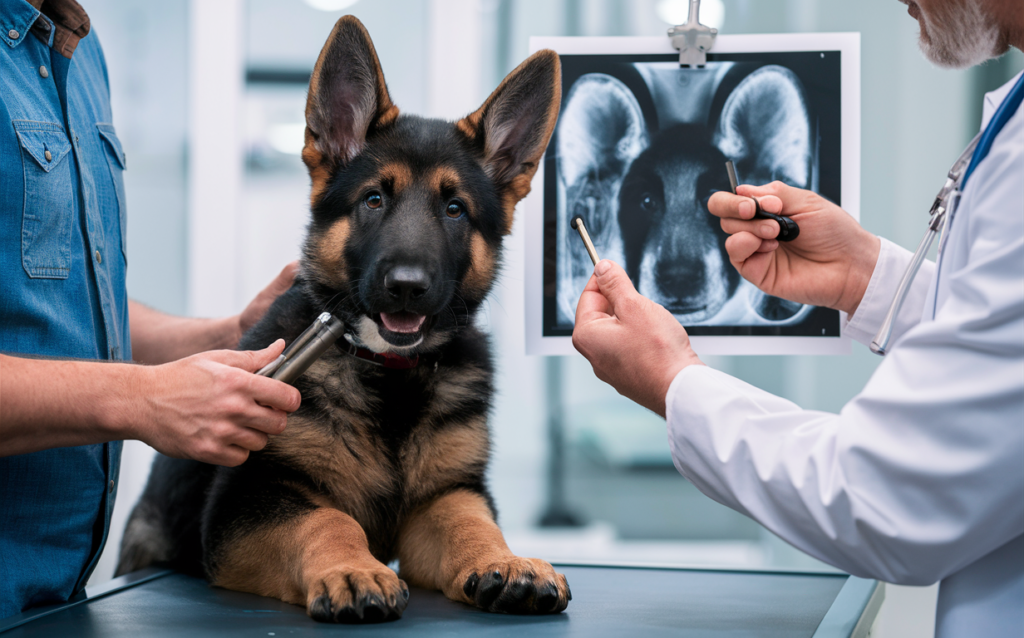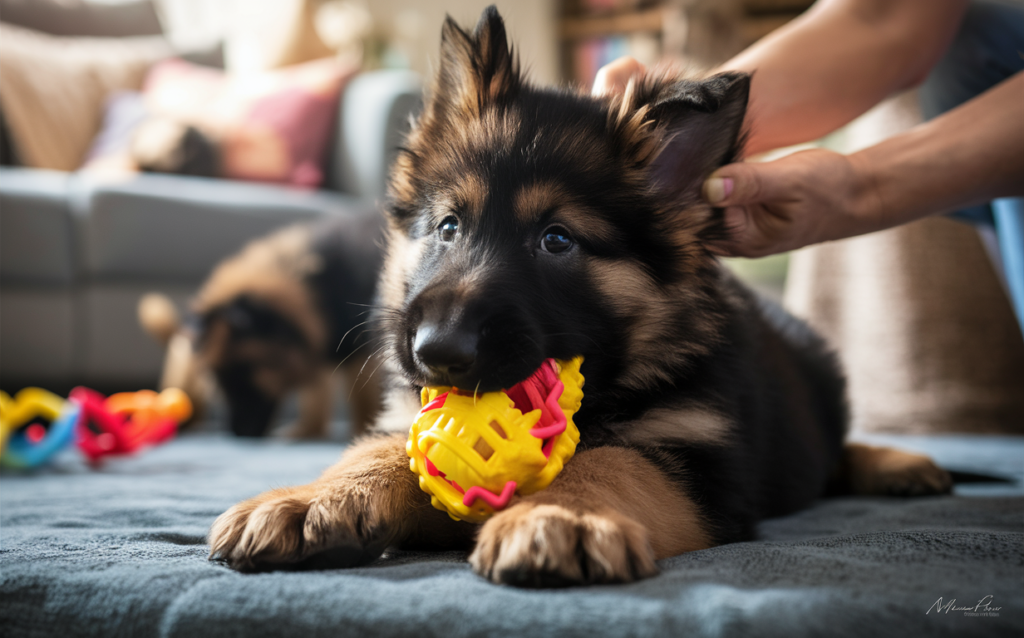Introduction
German Shepherds are one of the most popular dog breeds globally, known for their intelligence, loyalty, and distinctive upright ears. For many German Shepherd owners, one of the most eagerly anticipated milestones is when their puppy’s ears stand up. This moment not only signifies a step in their puppy’s development but also contributes to the breed’s iconic appearance. So, when do German Shepherd ears stand up, and what factors influence this process? Let’s dive in and find out.
Understanding German Shepherd Ears
Anatomy of German Shepherd Ears
German Shepherds have large, triangular ears that are set high on their heads. These ears are made up of cartilage and muscles that allow them to move and stand upright. The strength and flexibility of the ear cartilage play a crucial role in whether and when the ears will stand.
Why Ear Position Matters
The position of a German Shepherd’s ears is not just about aesthetics. Upright ears are a breed standard and are often associated with better hearing capabilities. They also reflect the dog’s alertness and health, which is why many owners are keen to see this development in their pets.
The Developmental Stages
Puppy Stages and Ear Development
German Shepherd puppies are born with floppy ears. This is perfectly normal and expected. As they grow, their ears go through various stages before they finally stand up.

Timeline for Ear Standing
Typically, a German Shepherd’s ears will begin to stand up between 8 weeks and 6 months of age. Some puppies may take longer, and that’s usually not a cause for concern. The process can be gradual, with ears standing one day, flopping the next, and then standing up again.
Factors Influencing Ear Standing
Genetics
Genetics play a significant role in when and whether a German Shepherd’s ears will stand up. Puppies from parents with strong, erect ears are more likely to have ears that stand up.
Nutrition
Proper nutrition is crucial for the development of strong ear cartilage. A diet rich in calcium, protein, and other essential nutrients supports overall growth, including the ears.
Health and Wellness
A puppy’s overall health can impact ear development. Infections, injuries, and other health issues can delay or prevent ears from standing.
Signs That Ears Are Starting to Stand
Early Signs
Owners may notice their puppy’s ears starting to twitch or move as the muscles and cartilage develop. This is often the first sign that the ears are preparing to stand.

Typical Age Range
Most German Shepherds will have their ears standing by the time they are 6 months old, though some may take a bit longer.
Common Concerns and Myths
Misconceptions About Ear Standing
There are several myths surrounding German Shepherd ear standing, such as the belief that floppy ears indicate a lack of purity in the breed. These misconceptions can cause unnecessary worry for owners.
Common Worries of Owners
Many owners become concerned if their puppy’s ears haven’t stood up by a certain age. It’s crucial to keep in mind that each puppy is unique and that some may require more time than others.
Role of Genetics
Breeding and Genetic Predisposition
Breeders often select parent dogs with strong, erect ears to increase the likelihood of puppies having the same trait. Genetics are a key factor in ear development.
How to Ensure Good Genetics
When choosing a puppy, it’s beneficial to meet the parents and see their ear structure. Reputable breeders will also provide information about the genetic background of their dogs.
Nutritional Needs
Essential Nutrients for Ear Development
To support ear development, ensure your puppy’s diet includes:
- Calcium: For strong bones and cartilage
- Protein: For overall growth
- Omega-3 fatty acids: For fur and skin health
Diet Recommendations
Feeding a high-quality puppy food that meets all nutritional requirements is essential. Consult your vet for specific dietary recommendations based on your puppy’s needs.
Health and Wellness
Importance of Overall Health
Keeping your puppy healthy through regular vet check-ups, vaccinations, and a balanced diet is crucial for their development, including their ears.
Common Health Issues Affecting Ear Standing
Issues such as ear infections, injuries, or mites can impact ear development. Early detection and treatment are essential.
Supporting Your Puppy’s Ear Development
Tips for Helping Ears Stand
- Chew Toys: Encourage chewing to strengthen jaw and ear muscles.
- Ear Massage: Gently massaging the base of the ears can stimulate blood flow.
- Taping: In some cases, taping the ears can provide the necessary support. Consult a vet before attempting this.
Exercises and Activities
Regular physical activity helps overall growth. Playtime, walks, and training sessions are beneficial.
When to Worry
Signs of Potential Problems
If your puppy’s ears haven’t shown any signs of standing by 7-8 months, or if there’s uneven development, it may be time to consult a vet.
When to Consult a Vet
Persistent floppy ears beyond 8 months of age warrant a vet visit to rule out underlying health issues.
Professional Treatments
Vet Recommendations
Vets can offer advice on diet, supplements, or exercises to help with ear development.
Surgical Options
In rare cases, surgical intervention might be considered. This is typically a last resort and is discussed thoroughly with a vet.

Success Stories
Real-life Examples of Ear Standing Journeys
Many German Shepherd owners have shared stories of their puppies’ ear journeys. Some took longer than others, but with patience and care, most achieved the iconic look.
Testimonials from Owners
Hearing from other owners can be reassuring. “Max’s ears didn’t stand by five months, which worried me, but by seven months, they were perfect thanks to patience and a healthy diet
‘Sarah, the owner of GSD.
Conclusion
The journey of a German Shepherd’s ear standing is a fascinating one, filled with anticipation and excitement. While genetics, nutrition, and health all play pivotal roles, patience and care are key. Remember, each puppy is unique, and with the right support, their ears will stand tall, reflecting the iconic image of this beloved breed. Also train your German shepherd in early age.
FAQs
Q: What if only one ear stands up?
This is quite common and usually temporary. Both ears should stand eventually.
Q: Can taping ears hurt my puppy?
When done correctly and under vet guidance, it can be safe. Avoid DIY methods without professional advice.
Q: Do all German Shepherds have upright ears?
While it’s a breed standard, some may have softer cartilage leading to floppy ears.
Q: Can diet alone ensure ears will stand?
Diet is important but not the sole factor. Both general health and genetics are important factors.
Q: Is ear standing a sign of a purebred German Shepherd?
Not necessarily. Some purebreds may have floppy ears due to various factors.

